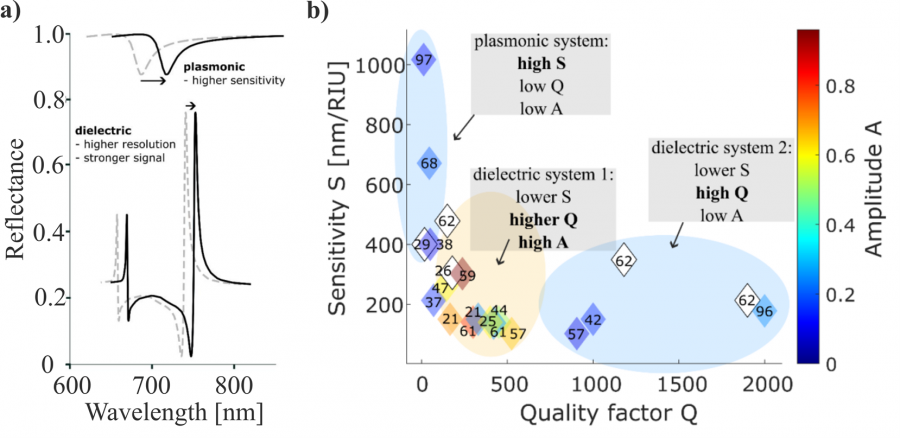
Nanophotonic sensing and label-free imaging of extracellular vesicles
GA, UNITED STATES, May 7, 2025 /EINPresswire.com/ -- This review examines imaging-based nanophotonic biosensing and interferometric label-free imaging, with a particular focus on vesicle detection. It specifically compares dielectric and plasmonic metasurfaces for label-free protein and extracellular vesicle detection, highlighting their respective advantages and limitations.
Proteins play a vital role in human health and detecting them is crucial in medical research and clinical practice. Protein assays are typically used to diagnose diseases, track disease progression, and assess treatment effectiveness. A growing area of interest is the detection of extracellular vesicles (EVs), nanoscale particles secreted by cells into bodily fluids. These vesicles present proteins that reflect their cell of origin and overall physiological state, making them valuable disease indicators. Because EVs can be collected from fluids rather than requiring invasive procedures like biopsies, they offer a promising way to monitor conditions like cancer in a minimally invasive manner.
Traditionally, protein detection has relied on enzyme-linked immunosorbent assays (ELISA), which use antibodies to bind to specific proteins. However, ELISA has limitations, such as requiring precise antibody pairs, which are not always available. Additionally, labeling proteins with chemical markers can alter their natural structure and function, potentially affecting results and increasing costs.
To overcome these challenges, the research community is exploring label-free detection methods. Advanced techniques such as surface plasmon resonance (SPR), photonic crystal resonance, interferometry, and nanoparticle tracking analysis enable the study of proteins and EVs in their natural state, reducing the risk of experimental interference. Label-free approaches also allow for real-time analysis, offering faster and more detailed insights compared to traditional methods.
A particularly promising area of label-free detection is imaging-based nanophotonic sensing, which uses specially engineered surfaces to detect molecular interactions with high sensitivity. Within this field, dielectric and plasmonic metasurfaces are emerging as key technologies. Plasmonic systems are highly effective at detecting small molecules because they enhance electromagnetic fields at the nanoscale. Meanwhile, dielectric metasurfaces offer higher stability and precision and are ideal for analyzing EVs and larger biomolecules.
Despite these advancements, challenges remain. The scientific community is working to improve surface chemistry approaches for more specific biomarker detection, develop cost-effective manufacturing methods, and integrate artificial intelligence to enhance data analysis. Further innovations in high-Q resonant structures—designed to optimize light-matter interactions—could lead to ultrasensitive, label-free biosensing and single-particle imaging. As these technologies improve, they have the potential to transform disease detection and monitoring, advancing both research and clinical applications.
References
DOI
10.1038/s41377-025-01866-2
Original Source URL
https://doi.org/10.1038/s41377-025-01866-2
Funding information
This work was supported in part by National Institute of Health (NIH) 1U01CA279858, U01CA284982, R01CA239078, R01HL163513, R21CA267222, and R01CA264363.
Lucy Wang
BioDesign Research
email us here
Distribution channels: Science, Technology
Legal Disclaimer:
EIN Presswire provides this news content "as is" without warranty of any kind. We do not accept any responsibility or liability for the accuracy, content, images, videos, licenses, completeness, legality, or reliability of the information contained in this article. If you have any complaints or copyright issues related to this article, kindly contact the author above.
Submit your press release
